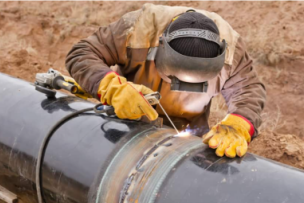Category One: Machine Tool Factors
The main factors in this category are rigidity, precision and dynamic stability. If every one of these factors isn't working together in harmony, then your workpieces won't be consistent in quality.
Other important machine tool factors include power and speed availability, control capability, machine controls, slide movements, and truing and dressing mechanisms. Each of these factors controls the accuracy of where the grinding wheel and workpiece are positioned during a job.
The cooling system in your grinding machine is also important because it controls the temperature, provides lubrication and removes small chips while the machine is grinding. The pressure range, filtration system, flow rate, flow location, coolant type and pump capacity of your cooling system are all essential components of an optimized process. Ensuring each of these factors is properly addressed and maintained helps your grinding machine run at peak efficiency, so production quality doesn’t suffer.
Category Two: Work-Material Factors
Any factor that alters the grinding process falls under this category. Some examples include thermal stability, abrasion resistance, and microstructure and chemical resistance. It's very important to monitor these factors to ensure the grinding process works as expected.
Also consider the shape of the product you're making. The shape of your workpiece determines whether the grinding wheel you're using is an appropriate match. The workpiece's shape can also affect the cooling system, leading to additional problems. If your workpiece has sharp edges or a tight radius, then you may want to consider using a special type of grinding wheel and dressing system.
Finally, consider the quality requirements of the parts you're using. Sometimes, this can be the weak link in your operation and may cause a reduction in efficiency. Look at features such as tolerance and surface finish requirements. Consistency is the key to success, so you want to see almost exact matches for the tolerances and finishes of your parts.
Category Three: Wheel Selection Factors
The characteristics of the grinding wheel in your grinding machine are crucial to your success. You need to choose a wheel with the proper grain type, size, distribution, properties and concentration for the job at hand.
Secondly, look at the wheel bond, which is grouped by its type, stiffness, hardness, porosity and thermal conductivity.
The size and shape of the wheel should match the geometry of your workpiece. Check the core material of your wheel and make sure its profile matches the other selection factors for the most efficient job.
Category Four: Operational Factors
You can predict how the grinding job will look at completion if you understand the operational factors, including wheel balancing, fixturing, frequency of truing and dressing, and coolant application. Knowing how these factors, and others, interact with each other is the secret to understanding what happens in the grinding zone.
The best method to discover how to optimize the grinding process is called the systems process. This process involves focusing on a few specific factors from each of the four workplace categories and measuring how results change. It provides specific, accurate information, and is much better than taking a shotgun approach and changing a handful of factors at once, and then struggling to find out why your results changed.
Bringing Everything Together: Looking at the Four Categories Along with Economic Data
If your company is like most other companies, you produce products by using a batch process. When you're using a batch process, it's critical to ensure each workpiece has the same geometry and finish, or you're likely to receive a lot of customer complaints, which nobody wants to deal with.
There are two keys to achieving results with minimal variations: establishing standard practices to ensure consistency and using reliable equipment to measure precision. Usually, you'll measure acceptable consistency by using SPC, or statistical process control.
Now, let's discuss how to reduce economic costs so you can make more money. Measuring factors that affect profitability and efficiency, such as cost per part, production rate and the finished product performance, are vital pieces to the economic puzzle.
Once you collect economic-related data, it's time to compare it with the factors of the four workplace categories you're using. The systems approach combines reliable process control with skilled operators to discover the needed adjustments for improved results.
Previously Featured on Norton Abrasives.







Talk to Us!
Leave a reply
Your email address will not be published. Required fields are marked *